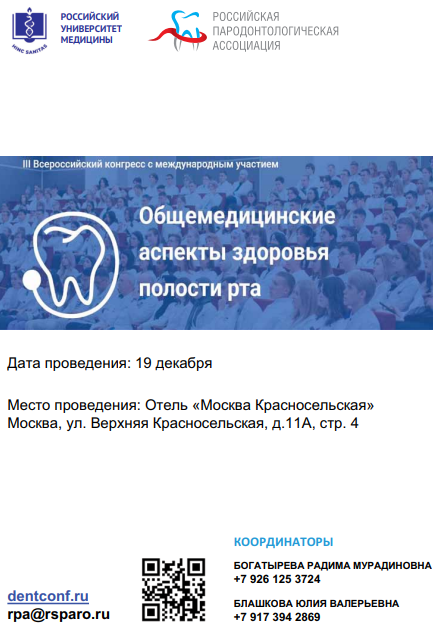Randomized study of DNA damage in children with cleft lip and palate living in regions with environmental toxicants
https://doi.org/10.33925/1683-3031-2025-895
Abstract
Relevance. DNA damage caused by exogenous factors acting on the maternal organism during preconception and early pregnancy plays a central role in the pathogenesis of congenital malformations. Many industrial toxicants released into the atmosphere possess teratogenic and mutagenic properties, among which benzo[a]pyrene and formaldehyde are of particular concern.
Objective. To conduct a randomized study to assess DNA damage by quantifying DNA strand breaks using the alkaline comet assay (single-cell gel electrophoresis) in isolated leukocytes from children with cleft lip and palate (CLP). The study compared three groups – children with CLP from regions with environmental toxicants, children with CLP from unexposed regions, and healthy controls from regions with elevated petrochemical emissions – to assess the association between DNA damage and CLP.
Materials and methods. The randomized study included 140 children aged 5–12 years divided into three groups: 60 children with CLP from regions with elevated atmospheric petrochemical emissions, 40 children with CLP from regions without petrochemical industry emissions, and 40 apparently healthy children from regions with elevated levels of atmospheric petrochemical pollutants. Peripheral venous blood was drawn after an overnight fast into EDTA tubes and transported to the Ufa Research Institute of Occupational Medicine and Human Ecology for comet assay analysis. DNA damage was assessed using the alkaline comet assay.
Results. Children with CLP living in regions with petrochemical pollutants showed markedly higher levels and prevalence of DNA damage. Comet tail length and % tail DNA differed significantly from those in healthy controls and in CLP children from unexposed regions, indicating heightened genotoxic stress associated with environmental exposure.
Conclusion. The differences in DNA damage levels among children from varying ecological conditions suggest that an unfavorable environmental background serves as a significant trigger of genotoxic stress potentially involved in the pathogenesis of cleft lip and palate.
About the Authors
O. S. ChuikinRussian Federation
Oleg S. Chuikin, DMD, PhD, Associate Professor, Associate Professor, Department of the Pediatric Dentistry and Orthodontics
3 Lenina Str., Ufa, Russian Federation, 450008
V. N. Pavlov
Russian Federation
Valentin N. Pavlov, MD, PhD, DSc, Professor, Rector, Head of the Department of Urology
Ufa
D. O. Karimov
Russian Federation
Denis O. Karimov, PhD, Head of the Toxicology and Genetics Department with the Experimental Clinic of Laboratory Animals
Ufa
D. D. Karimov
Russian Federation
Denis D. Karimov, PhD, Senior Researcher, Toxicology and Genetics Department with the Experimental Clinic of Laboratory Animals
Ufa
K. N. Kuchuk
Russian Federation
Kristina N. Kuchuk, DDS, Assistant Professor, Associate Professor, Department of the Pediatric Dentistry and Orthodontics
Ufa
References
1. Yakupova T.G., Gizatullina A.A., Valova Y.V., Kudoyarov E.R., Teregulov B.F., Mukhamadiyeva G.F., et al. The effect of acrylamide on DNA damage in mouse hepatocytes: assessment using the comet assay. Occupational health and human ecology. 2025;(1):96-112 (In Russ.). https://doi.org/10.24412/2411-3794-2025-10108
2. Langie SA, Koppen G, Desaulniers D, Al-Mulla F, Al-Temaimi R, Amedei A, et al. Causes of genome instability: the effect of low dose chemical exposures in modern society. Carcinogenesis. 2015;36 Suppl 1(Suppl 1):S61-88. https://doi.org/10.1093/carcin/bgv031
3. Yakupova T.G., Valova Ya.V., Repina E.F., Mukhammadieva G.F., Gizatullina A.A., Karimov D.O., et al. Genotoxic risks of occupational exposure to acrylic acid: assessment of DNA damage using the comet assay among chemical workers. Occupational Health and Human Ecology. 2025;(2):138-153 (In Russ.). https://doi.org/10.24412/2411-3794-2025-10209
4. Tyutrina V.A., Sosedova L.M., Novikov M.A. Analysis of the genotoxicity of iron nanocomposite arabinogalactan using the DNA comet method. Hygiene and Sanitation. 2024;103(10):1251-1256 (In Russ.). https://doi.org/10.47470/0016-9900-2024-103-10-1251-1256
5. Volobaev V.P., Larionov A.V., Shchetnikova E.A., Rosinsky A.Yu., Bach S.N. Assessment of DNA damage by the method of DNA comets in cryopreserved samples of human leukocytes and fibroblasts of the human lung embryo FLECh-104. Medical genetics. 2020;19(9):94-95 (In Russ.). https://doi.org/10.25557/2073-7998.2020.09.94-95
6. Kudoyarov E.R., Ivanova D.P., Bakirov A.B., Kalimullina D.Kh., Galiullina D.M., Mironova G.R. Clinical and genetic features of toxic liver damage in workers of petrochemical enterprises. Russian Journal of Occupational Health and Industrial Ecology. 2025;65(1):49-56 (In Russ.). https://doi.org/10.31089/1026-9428-2025-65-1-49-56
7. Galimova R.R., Karimova L.K., Muldasheva N.A., Valeeva E.T., Gazizova N.R. The foundation of the prevention of occupational morbidity in workers of petrochemical plants. Hygiene and Sanitation. 2019;98(9):967-971 (In Russ.). https://doi.org/10.47470/0016-9900-2019-98-9-967-971
8. Singh NP, McCoy MT, Tice RR, Schneider EL.A simple technique for quantitation of low levels of DNA damage in individual cells. Exp. Cell Res. 1988;175(1):184-191. https://doi.org/10.1016/0014-4827(88)90265-0
9. Collins AR, Ma AG, Duthie SJ. The kinetics of repair of oxidative DNA damage (strand breaks and oxidised pyrimidines) in human cells. Mutation Research. 1995;336(1):69-77. https://doi.org/10.1016/0921-8777(94)00043-6
10. Don E.S., Tarasov A.V., Epshtein O.I., Tarasov S.A. The biomarkers in medicine: search, choice, study and validation. Russian clinical laboratory diagnostics. 2017;62(1): 52-59 (In Russ.). https://doi.org/10.18821/0869-2084-2017-62-1-52-59
11. Rinella ME, Neuschwander-Tetri BA, Siddiqui MS, Abdelmalek MF, Caldwell S, Barb D, et al. AASLD practice guidance on the clinical assessment and management of nonalcoholic fatty liver disease. Hepatology. 2023;77(5):1797-1835. https://doi.org/10.1097/hep.0000000000000323
12. European Association for the Study of the Liver. EASL Clinical Practice Guidelines on non-invasive tests for evaluation of liver disease severity and prognosis – 2021 update. J Hepatol. 2021;75(3):659-689. https://doi.org/10.1016/j.jhep.2021.05.025
Supplementary files
Review
For citations:
Chuikin O.S., Pavlov V.N., Karimov D.O., Karimov D.D., Kuchuk K.N. Randomized study of DNA damage in children with cleft lip and palate living in regions with environmental toxicants. Pediatric dentistry and dental prophylaxis. 2025;25(2). (In Russ.) https://doi.org/10.33925/1683-3031-2025-895





































